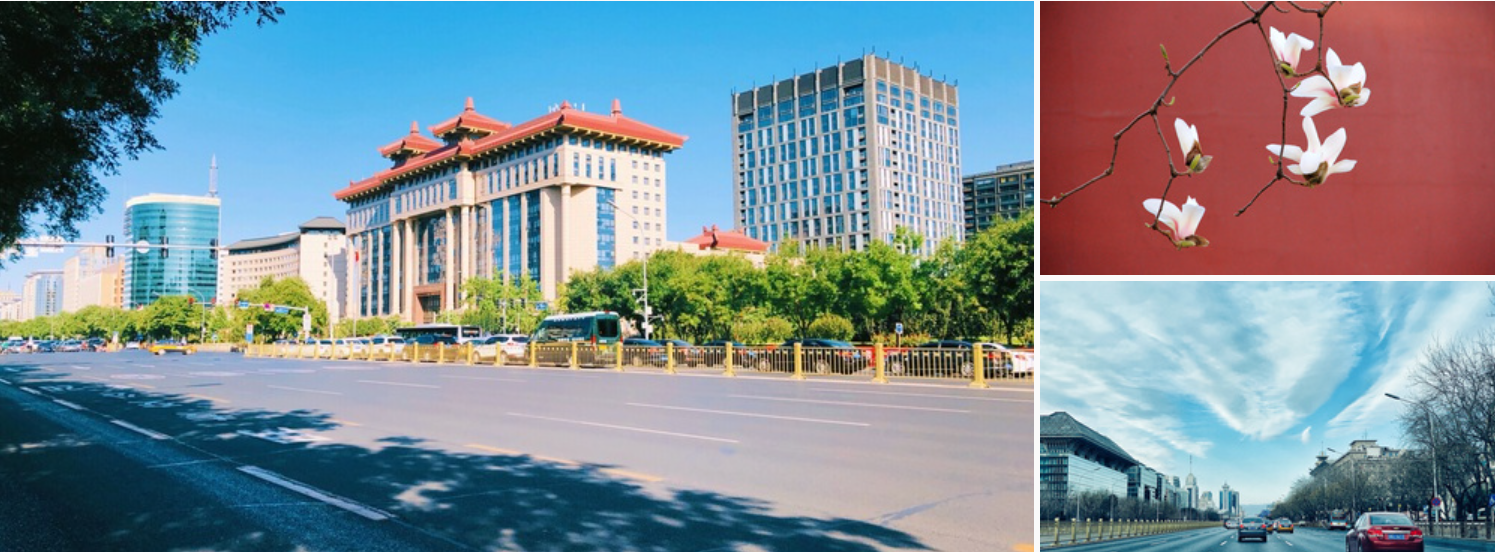Chang'an Street
Basic Overview: Chang'an Avenue is a main east-west axial road in Beijing, known as the "First Street in China". In a narrow sense, the eastern end of Chang'an Avenue starts from the Dongdan intersection, and the western end ends at the Xidan intersection, with a total length of 3.8 kilometers (including the section at the junction of Tiananmen Square). In a broad sense, the full length of Chang'an Avenue is about 55 kilometers. Based on the East and West Chang'an Avenues, it extends westward to Sanshi Road in Mentougou and eastward to Songliang Road in Tongzhou.
Historical Origins: The history of Chang'an Avenue can be traced back to 1276 AD when the Shuncheng Street inside the walls of Dadu in the Yuan Dynasty was built, which was the embryonic form of the modern Chang'an Avenue. In the early Ming Dynasty, Zhu Di, the Prince of Yan, moved the capital to Beiping. He demolished the south wall of Dadu in the Yuan Dynasty and pushed it southward. The original South Shuncheng Street became the east-west horizontal street in front of Chengtian Gate. Since the Chang'an Left Gate and Chang'an Right Gate were built on the east and west of the street respectively, this street was named "Chang'an Avenue". During the Ming and Qing dynasties, Chang'an Avenue was a dirt road. It was not until 1905 - 1907 that it was built into a macadam road, and it was paved with asphalt in 1917.
Important Status: Chang'an Avenue is an important venue for China's National Day and the grand military parade of the Chinese People's Liberation Army. Since the founding ceremony, many large-scale military parade ceremonies have been held here. Meanwhile, it is also one of the important political, cultural, and historical symbols of China. There are many important government agencies, museums, cultural heritage sites, and commercial centers along the street, such as the Great Hall of the People, Zhongnanhai, the Ministry of Public Security, the Ministry of Commerce, the Palace Museum, the National Museum of China, etc., attracting numerous domestic and foreign tourists to visit and shop.

Planning and Construction: In 1946, the Beijing Municipal Government proposed the idea of constructing office buildings for administrative organs on Chang'an Avenue. In 1953, the area along Chang'an Avenue was clearly defined as the "location of the central leading organs". In 1958, it was clearly stated that the East and West Chang'an Avenues should be widened to 120 meters, and the road section was determined to be in the form of a "one-piece slab" with a width of 50 meters. In 1983, Chang'an Avenue was first incorporated into the overall urban planning as the east-west axis of Beijing. In 1998, the Beijing Municipal Government carried out a large-scale environmental improvement work on Chang'an Avenue and its extension lines. In 2010, the planning scheme for the road project of the westward extension of Chang'an Avenue (from Gucheng Avenue to Sanshi Road) was approved.
Surrounding Landscapes: There are many famous landscapes around Chang'an Avenue, such as Tiananmen Square, the Palace Museum, the Great Hall of the People, Zhongnanhai, the National Museum of China, the Cultural Palace of Nationalities, etc. These landscapes are not only important symbols of Chinese history and culture but also important tourist attractions that attract domestic and foreign tourists.
Cultural Significance: Chang'an Avenue is like a huge cultural treasure house. It gathers the essence of traditional Chinese culture and also integrates diverse elements of modern culture. From the flag-raising ceremony on Tiananmen Square to the important meetings in the Great Hall of the People, Chang'an Avenue has witnessed the rise and development of New China, carrying the glory and dreams of the country. It is a "flowing history of the nation".
TAG:

